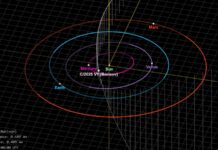In November 2002, a mathematician named Grigori Perelman quietly uploaded a paper to a public server. Little did the world know, this seemingly ordinary act would mark the solution to one of mathematics’ most enduring riddles: the Poincaré Conjecture. This complex problem had baffled mathematicians for nearly a century and its resolution shook the foundations of topology – the branch of math dedicated to studying shapes.
So what exactly was this elusive conjecture? Imagine taking any three-dimensional object, like a cat or the Empire State Building, and drawing a two-dimensional loop on its surface. If you could shrink that loop down until it vanished into a single point without tearing either the loop or the object itself, then, according to Poincaré’s hypothesis, that 3D space was mathematically equivalent to a sphere. In essence, it posited a fundamental relationship between curvature and the possibility of shrinking loops within three-dimensional spaces.
While mathematician Stephen Smale had successfully tackled a related problem in five dimensions back in 1961, earning him mathematics’ coveted Fields Medal, the 3D case remained stubbornly resistant to solution. The breakthrough came in the 1980s with Richard Hamilton, a Columbia University mathematician, who proposed using a technique called Ricci flow to unravel the puzzle.
Think of Ricci flow like smoothing out crumpled plastic wrap with a hairdryer; it gradually removes wrinkles and curvature, simplifying complex shapes into more fundamental ones. In this context, Ricci flow could theoretically smooth out any three-dimensional shape until it resembled a sphere. The catch?
The process often resulted in “singularities” – points of infinite density that threatened to derail the entire approach. These singularities acted like stubborn wrinkles that refused to flatten. Mathematicians could try surgically removing them, but there was always the nagging fear that new ones would inevitably emerge, rendering the solution incomplete.
Perelman’s genius lay in resolving this singularity problem. After a decade of intense research in the US, he chose to return to his native St. Petersburg in the mid-1990s, retreating from the academic limelight.
He became a recluse, described by colleagues as “unworldly” with long hair and fingernails reminiscent of the historical figure Rasputin. His focus remained solely on his work, often disappearing for days into his apartment where he would reportedly hike through nearby forests or hunt for mushrooms in his spare time. He seemed utterly unconcerned with fame or material wealth.
Then, out of this unexpected silence, came the three game-changing papers published between 2002 and 2003. In them, Perelman meticulously outlined his solution to the singularity problem – proving that these problematic points inevitably simplified into manageable shapes like spheres or tubes. He demonstrated that if you patiently followed Ricci flow to its logical end, any complex 3D shape would ultimately morph into a sphere.
The Poincaré Conjecture had finally been solved.
Although it took several years for mathematicians to fully understand and verify the intricate details of Perelman’s proofs, his work stood as a monumental achievement in topology. In 2006, colleagues John Morgan and Gang Tian published an expansive 473-page paper confirming Perelman’s solution. The mathematical community hailed him as a visionary, and both the prestigious Fields Medal and the Clay Millennium Prize (complete with a $1 million award) were offered to Perelman in recognition of his groundbreaking work.
He declined both accolades, reportedly taking issue with how credit was distributed within the mathematics world. Perelman resigned from his position at the Steklov Institute in 2005 and withdrew entirely from public life. He remains largely a recluse, living quietly in his St. Petersburg apartment, where neighbors say he cares for his elderly mother. His legacy stands as a testament to the power of solitary genius and the unassuming nature of groundbreaking mathematical discovery.

























